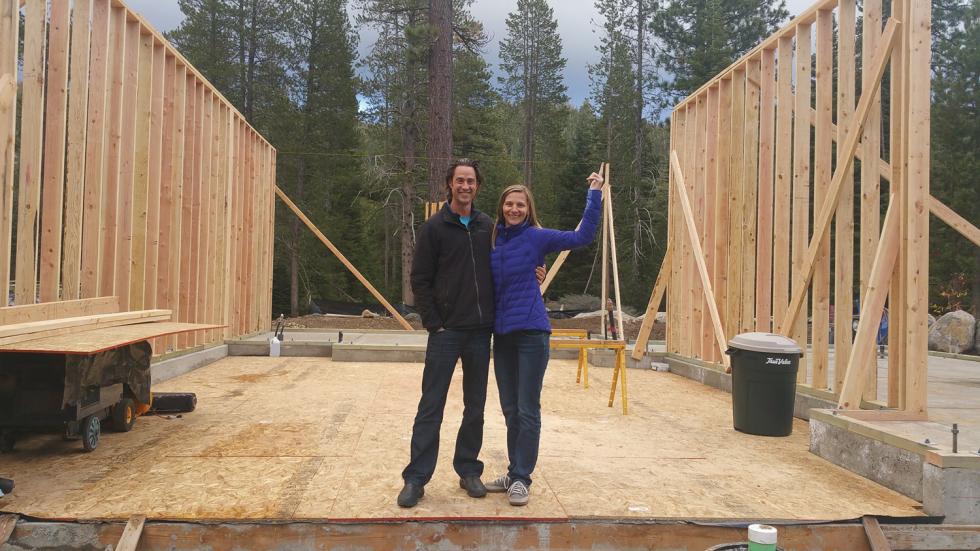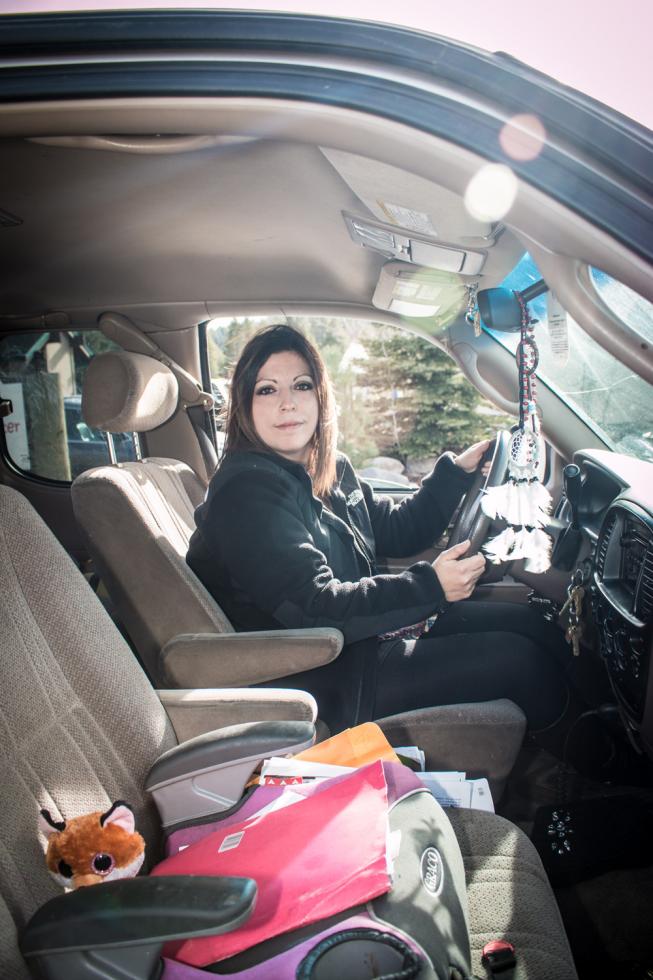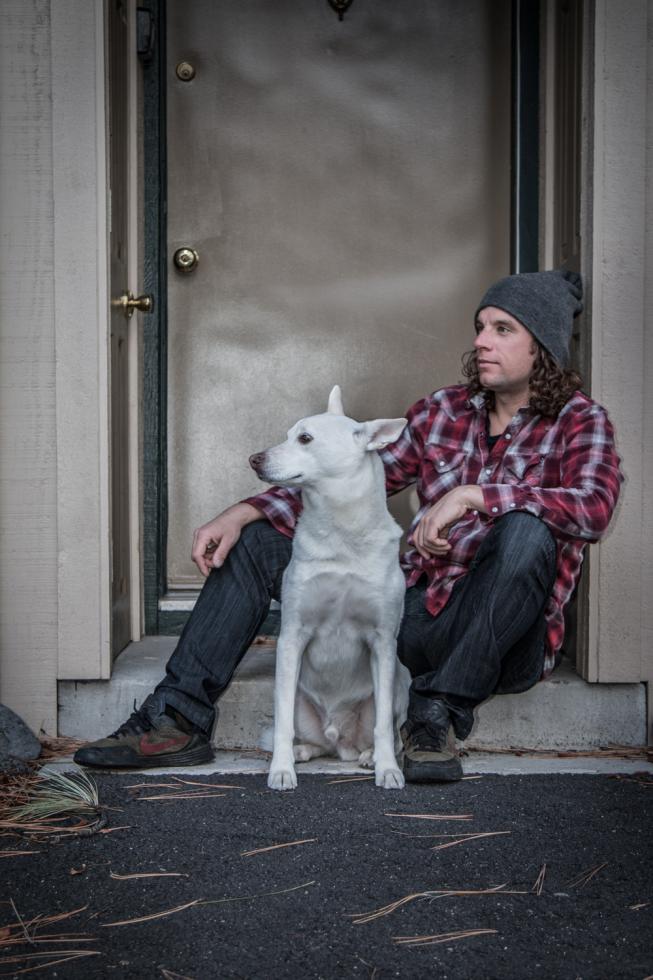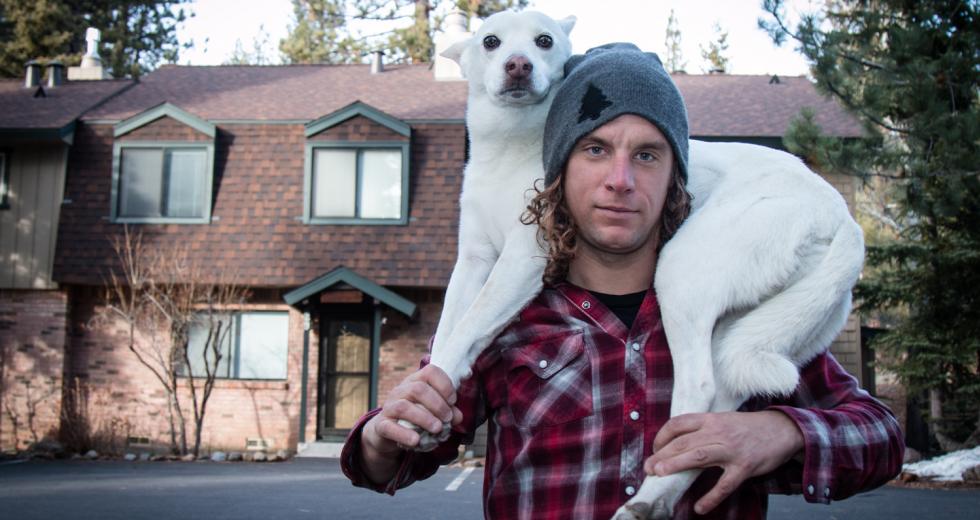On paper, Tim Olesnavage is the perfect tenant: he’s a single guy with no pets or kids, he has a high-paying job and money in the bank, he doesn’t smoke and he doesn’t even really have a limit on what he’s willing to spend for rent each month. And yet, “I’ve had to move five times in the past 12 months,” he says.
Olesnavage moved from L.A. to the small town of Incline Village, in north Tahoe, almost two years ago to start a tech incubator with co-founder Jameson Stafford. “You know, you’d think you’re doing a tech startup in the woods, right? But we can find talent, we can find everything we need. The No. 1 problem is housing.”
It’s a problem increasingly on the minds of business owners in Truckee and north Tahoe. Kristi Thompson, of MWA Architecture in Truckee, employs about 20 people. She has hired six people from outside the region in the past five years, and says that they have all struggled to find a place to live.
“Several of them moved into the condos at Northstar, because that was the only thing they could find,” Thompson says. “And they immediately learned that everybody there was ski bums. They were loud, they were partying all the time, there were fights in the parking lot. It was affecting their work, because they were coming in exhausted, frustrated, stressed out.”
Perhaps of most concern to policymakers is the way the housing crunch is affecting the middle class and impacting the professions every community needs most: teachers, policemen and nurses. At a recent town meeting in Truckee, about 100 people packed into a side room at the small local airport to discuss housing issues in the region. Truckee Police Chief Adam McGill said he’s losing officers because they can’t afford homes in the area. In the last six months, he’s lost two to the Placer County Sheriff’s department. “They felt it was more competitive and they could get the sort of home they desired,” he said.
Policeman Noel Borden still works in Truckee but had to move to Reno to find an apartment when he and his wife split up last year. The commute is inconvenient, he says, and bad for the community when first responders are such a long drive away: “With a heart attack or stroke, minutes save lives and it’s important to have first responders living in your neighborhood.”
“Look, it’s never been easy to live here, it’s always required that people have a couple of jobs and housing has always been an issue. But we’ve reached a tipping point.”Ryan Adams
The housing crunch is a problem affecting both the working class and the professional class. Workers move to the area lured by lucrative resort jobs, then find themselves stuck when the cost of housing nearly outstrips their pay. Professionals have increasingly relocated to Tahoe in recent years, too. Some are able to telecommute from the mountains to companies based in the Bay Area and beyond. Others have decided to give startup life a go as the area has worked to rebrand itself as a year-round community that’s good for businesses. (Truckee recently launched a new marketing campaign targeting startups and small business owners, for example, with the tag line “Base camp for your big life.”) But even those with a fairly large housing budget are finding themselves stuck in overpriced rentals or unable to find a permanent home of their own.
According to a recent regional housing study, covering north Tahoe and Truckee and commissioned by the nonprofit Truckee Tahoe Community Foundation, more than 12,000 workforce housing units will be needed in the next five-to-10 years, but the region only has capacity to build around 7,000. The study also found that nearly half of the population spends more than 30 percent of their income on housing; the median household income is $74,800. As of fall 2015, average rents ranged from $1,000 a month for a studio, up to $4,000 a month for a four-bedroom house, and the median home sale price is $538,000. Those prices have increased in the past year as the market has been flooded with buyers from the Bay Area, willing to pay more for investment properties than locals can afford to pay for housing. According to the study, 65 percent of homes in north Tahoe and Truckee are vacant and primarily used for vacation use.
“Look, it’s never been easy to live here, it’s always required that people have a couple of jobs and housing has always been an issue,” says born-and-bred Tahoe boy Ryan Adams. “But we’ve reached a tipping point. I don’t run into anyone that isn’t either dealing with this problem themselves or has a close friend or family member dealing with it.”
Ryan and Bibi Adams almost left the area after being priced out
of their rental in Incline Village. In the end, they were able to
finance building their own home. (Photo by Ryan Adams)

Not a New Problem, But a Bigger One
Adams grew up in his parents’ bed and breakfast at the base of Squaw Valley Resort, and had been living for the past several years in an apartment in Incline Village, where he works as an investment manager. His wife owns and operates a successful house-cleaning business in north Tahoe. “We’re doing well. We make good money, we have savings — and still this hit us,” Adams says.
The couple’s landlord decided to double their rent from one month to the next earlier this year. “At first we thought we’d just find another rental in Incline, but there was nothing in our price range, so we kept expanding the search out,” Adams says. Eventually they decided to look into buying, but similarly couldn’t find a home that didn’t need a lot of work and that fit their budget. Finally, the stars aligned — the couple found land they could afford, managed to qualify for a loan and are now in the process of building their own home.
“We couldn’t find any houses that were in our $500,000 budget. They were either falling apart or wouldn’t really work with three kids.” Elvia Esparza
Adams says they were very close to leaving the area. “The psychological impact of literally being uprooted — I couldn’t sleep back in May because here my wife and I are — she has a successful business and I’ve been working for a company for 15 years and we’re doing well, we have savings, we’re prepared for all of this,” he says. “And yet there we were. All of a sudden the rug got pulled out from under us, and I got to the point where I was extremely desperate and looking at options that were a big step backwards for me. Getting pushed that close to that was really scary, and I’m grateful we were able to figure something out.”
Hundreds of other people have not been so lucky. Elvia Esparza grew up in Truckee and never wanted to leave. When she and her husband qualified for a first-time homebuyer program funded in part by fees from the development of the town’s Martis Camp in 2006, a subdivision filled with million-dollar-plus homes (most of them second homes), they were thrilled. “But we couldn’t find any houses that were in our $500,000 budget,” she says. “They were either falling apart or wouldn’t really work with three kids.” Ultimately, her family had to move to Reno, but she and her husband both continue to work in Truckee and their kids go to school there, too. The commute is about 40 minutes, but that drive doubles in winter. Still, Esparza says she feels lucky to have found a home. “I get four or five calls a day from people who are living in their cars, desperate to find a place to live.”
Elvia Esparza and her family commute 40 minutes from Reno to work
and school in Truckee. Reno was the closest they could find
affordable housing. (Photo by Terence Duffy)

According to Stacy Caldwell, CEO of the Truckee-Tahoe Community Foundation, part of addressing the discrepancy between the 12,000 new residences needed in the region over the next decade and the capacity for building new homes is ensuring different types of housing.
“Those 7,000 need to be a mix of homes,” she says. “That’s a big part of the problem. It’s not just the number of homes, it’s also the type of homes. We have a huge percentage of large, three-bedroom homes, and hardly any one- or two-bedroom homes or apartments. And a big house not only isn’t affordable for a lot of people, it just doesn’t suit different phases of life. If you’re a single, young professional, you don’t really want to live in a large three-bedroom home. Same goes for older retired couples whose kids are out of the house.”
“I see a lot of vacation houses around here that are always empty — you’d think they would want the steady income every month, but I guess not.”Jared Fournier
Caldwell says the area also needs to find a way to better integrate the permanent community and the second homeowner community. “We love our second homeowners, and we need them,” Caldwell says. “If they all decided to move here tomorrow, we wouldn’t have the resources to support them. So no one is suggesting that. But we need to find a way to strike a better balance.”
The Airbnb Effect
Truckee and north Tahoe have always had a large number of second homes, but in the past more of them were rented out to long-term residents. With the rise of Airbnb and VRBO, that market has increasingly tightened. Jared Fournier, a mechanic who works at a boat marina on Tahoe’s west shore in spring and summer and at a ski resort in Olympic Village in the winter, was recently forced out of his long-term rental when his landlord decided to convert it to a short-term Airbnb rental. “It looks a lot nicer now than when I lived there,” he says. “When I was there, there were leaky pipes and a giant hole in the deck, but it was $1,800 a month, which is cheap by Tahoe standards.” Now the landlords can make that in a week.
“I don’t blame them if they can make that much more money, but it’s empty most of the time,” Fournier says. “And I see a lot of vacation houses around here that are always empty — you’d think they would want the steady income every month, but I guess not.”
Airbnb may also help some longtime locals afford to purchase homes. At least that’s Carrie Robertson’s plan. She has lived in the area for 10 years, during which time she has dealt with her fair share of bad landlords. Tired of getting pushed out of places with no notice, in 2015 she bought a home with an attached apartment, which they now rent to some friends. “Eventually my parents will live there part of the year and we will vacation rental it the rest of the time,” she says. “Having that space rented is the only way I can afford my huge mortgage. All of the anti-VRBO/Airbnb things I hear terrify me because eventually I’ll be relying on them so that we can keep our home.”
No Silver Bullet
Although Truckee-Tahoe Community Foundation’s regional housing study helped frame the issue in terms of concrete data points, those points are made up of thousands of people, each with their own needs and concerns. Two new projects on the books in Truckee illustrate just how difficult a problem it is to solve. One, a redevelopment of the railyard in downtown Truckee, will start with an apartment building called The Artist Lofts that will include 67 affordable housing units and 10 market-rate units. Most locals are thrilled about the project, but it leaves out the missing middle class. According to the housing study, about 37 percent of the year-round population is low-income, and about 20 percent are middle-income — not wealthy, but they make too much to qualify for subsidized affordable housing. “I’m really worried about the folks in the middle,” says Truckee Mayor Joan DeRyk Jones. “There are some subsidies and programs to get low-income housing built, but then you have people who are just above that income and we don’t really have a solution for them.”
Jared Fournier was forced to leave his $1,800 a month rental —
“cheap by Tahoe standards,” he says. (Photo by Terence Duffy)

One possible solution is a second new apartment development about to go before the town’s planning commission. The Coburn Crossing project, which would consist of a Marriott hotel and 138 apartments, is playing by different rules than previous apartment developments. To make it pencil out for the developers, the town has offered to take care of traffic impact mitigation (in this case, building a roundabout) with $1 million from its workforce-housing fund, which has drawn some local criticism.
But Town Manager Tony Lashbrook says the idea is to provide workforce housing for the missing middle. “We lifted the income-restriction, but we added a contingency that those apartments can’t be sold, they have to be rented,” he says. He says the town council hopes the market-rate apartments will provide much-needed housing options for middle-income residents. “This is locals housing,” Lashbrook says. “It can’t be ‘condo-ized,’ can’t be sold, can’t be short-term rented.”
It all sounds good, but the Artist Lofts are currently on hold — because the majority of the development will be income-restricted units, the developers were hoping to get a low-income housing tax credit from the state. That didn’t materialize, so the developers are now looking for alternative funding sources. And Coburn’s Crossing will face an uphill battle if community members perceive it as a sweetheart deal for developers. “Ultimately it’s going to require a collaborative effort and a mix of solutions,” Caldwell says.
Although policymakers are already using the housing study to inform their discussions, the problem remains unsolved as far as locals are concerned. “I’m good until about November, then I don’t know what I’m going to do,” says Fournier, the mechanic working seasonally at both a marina and a ski resort. Then he pauses and motions to Lake Tahoe. “But this makes it all worth it. I’d still rather be here than anywhere else.”



